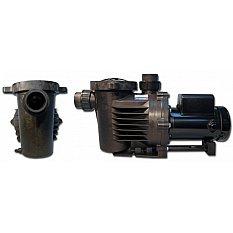What Is PHP For Web Development & Why Should You Use It?

What Is PHP For Web Development & Why Should You Use It?
PHP (Hypertext Preprocessor) is a widely-used server-side scripting language for web development. It is a powerful and versatile tool for creating dynamic and interactive web applications. Here’s an overview of what PHP is for web development and why you should consider using it:
Server-Side Scripting
PHP is a server-side scripting language, meaning it is execute on the web server before the web page is delivered to the user’s browser. This allows for server-side processing and dynamic content generation.
Web Application Development
PHP is particularly well-suited for building web applications, such as e-commerce websites, content management systems (CMS), forums, social media platforms, and more.
Ease of Learning
PHP is know for its relatively easy learning curve. It has a simple and C-like syntax, making it accessible to developers with varying levels of experience.
Open Source
PHP is open source, which means it is free to use and has a large and active community of developers. This community contributes to the language’s growth and support.
Platform Independence
PHP is platform-independent, making it compatible with various operating systems, including Windows, Linux, macOS, and more.
Database Integration
PHP seamlessly integrates with popular databases like MySQL, PostgreSQL, SQLite, and others. It allows developers to create, read, update, and delete data in these databases.
Extensive Libraries and Frameworks
PHP has a wide range of libraries and frameworks that simplify web development tasks. Popular PHP frameworks include Laravel, Symfony, and CodeIgniter.
Scalability
PHP applications can scale to accommodate increased traffic and data. This makes it suitable for both small websites and large-scale enterprise applications.
Community Support
PHP has a large and active community of developers who create and maintain numerous packages, extensions, and resources to facilitate web development
Real-Time Interactivit
PHP enables real-time interaction with web users through features like user authentication, form handling, and chat functionality
Security Features
PHP has built-in security features, such as data validation functions and secure session management, to help developers build more secure web applications.
Maintenance and Updates
PHP is actively maintain and updated, which means developers can benefit from new features, bug fixes, and security improvements.
In summary, PHP is a popular and versatile language for web development, enabling the creation of dynamic and interactive web applications. Its ease of learning, strong community support, and extensive libraries and frameworks make it a valuable tool for both beginners and experienced developers. When used effectively, PHP can help you build feature-rich websites and web applications to meet various business and personal needs.
What frameworks does PHP use?
PHP, as a server-side scripting language, can use with various frameworks to streamline web development, improve code organization, and simplify common tasks. Some of the popular PHP frameworks include:
Laravel
Laravel is one of the most widely use PHP frameworks. It offers an elegant syntax, a robust ecosystem of tools, and features like routing, authentication, and ORM (Object-Relational Mapping). Laravel is particularly known for its developer-friendly approach and support for modern web development practices.
Symfony
Symfony is a comprehensive and highly customizable PHP framework. It provides a wide range of reusable components and tools that can use to build both small and large-scale applications. Symfony’s modularity and flexibility make it a preferred choice for developers.
CodeIgniter
CodeIgniter is a lightweight and straightforward PHP framework. It is know for its simplicity and ease of use. CodeIgniter is suitable for small to medium-sized projects and emphasizes performance and a small footprint.
Yii
Yii is a high-performance PHP framework designed for building large-scale web applications. It includes features like caching, authentication, security, and powerful code generation tools. Yii’s speed and extensibility are notable attributes.
Zend Framework (Laminas)
The Zend Framework, now known as Laminas, is a robust and enterprise-level PHP framework. It provides a collection of components for building secure, scalable, and high-performance applications. It’s often chosen for complex projects.
Phalcon
Phalcon is a unique PHP framework as it’s implemented as a C extension. This design choice gives it exceptional speed and performance. It’s suitable for developers looking for a high-performance option.
Slim: Slim is a micro-framework designed for building small and lightweight web applications and RESTful APIs. It’s minimalistic and easy to use for specific tasks.
CakePHP: CakePHP is an elegant and feature-rich PHP framework that follows the “convention over configuration” principle. It simplifies code development by providing a set of conventions and tools.
Laminas (formerly Zend Framework)
Laminas, the successor to Zend Framework, is design to be an enterprise-ready PHP framework. It provides components for building web applications and services, with an emphasis on reusability and maintainability.
Flight: Flight is a micro-framework that is incredibly lightweight and easy to learn. It’s suited for building small web applications and APIs quickly.
Phalcon
Phalcon is unique because it’s a PHP extension written in C. This design choice makes Phalcon one of the fastest PHP frameworks available. It’s suitable for high-performance applications.
Aura: The Aura framework is a collection of decoupled and independent PHP libraries. Developers can pick and choose the components they need for their projects, making it a flexible option.
Each of these PHP course in Chandigarh frameworks has its own strengths and focuses, so the choice of which one to use depends on your specific project requirements, development style, and preferences. Some are better suite for large-scale applications, while others are design for rapid development or microservices. It’s important to evaluate each framework based on your project’s needs to determine the best fit.
Read more article:- Kpongkrnlkey.




